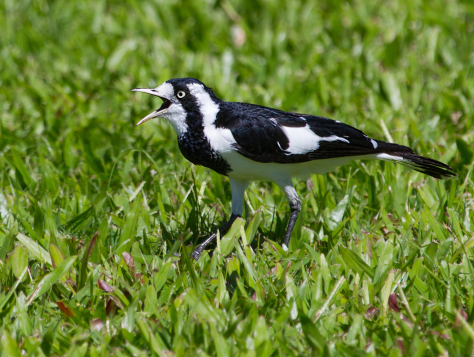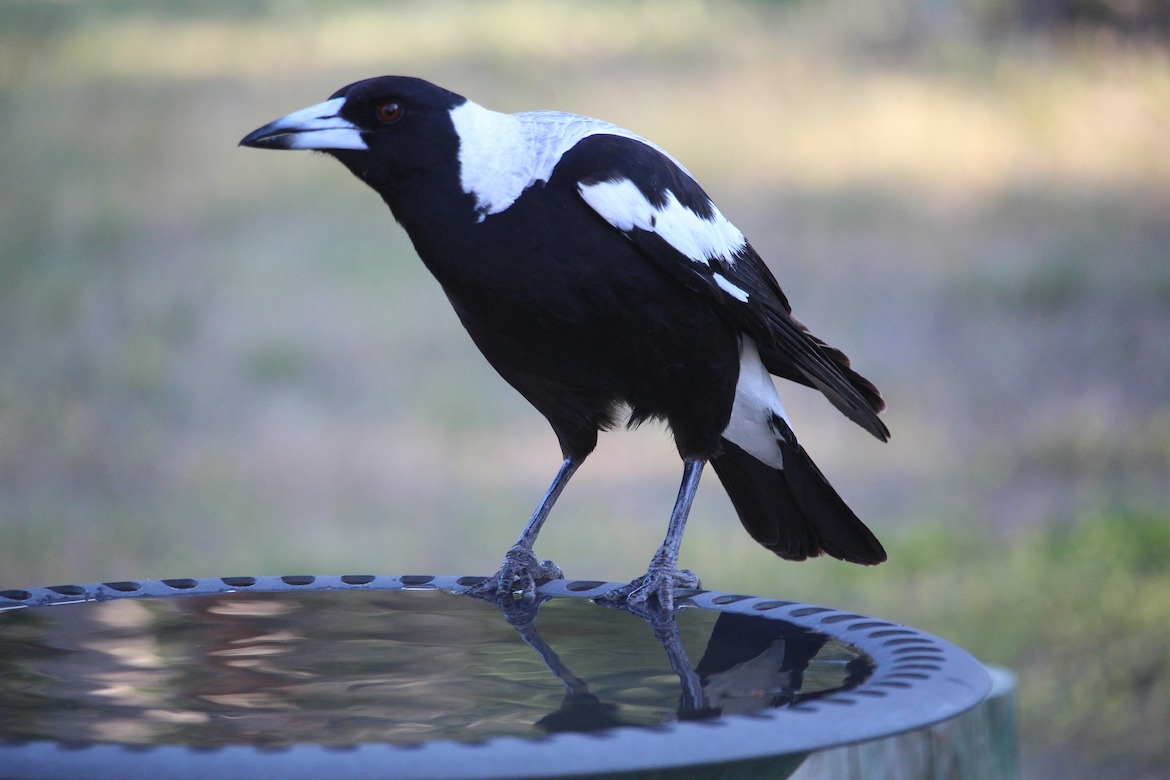Many people lump black birds (crows or ravens) and pied ones, such as the Australian magpie, all together, and think of them as “birds of ill omen” or some such. Of course, not everyone dislikes birds that are black. My brother recounts a legend in his family history book, A Little Bit of Irish, connected to our Kennedy ancestors from Northern Ireland. They were descendants of Anglo-Scottish Protestants in Ulster and came from the village of Brookeborough in County Fermanagh.
William writes: “Brookeborough was in the hands of the Maguire clan until a rebellion in 1641, when it was given to the Brooke family. Lady Maguire loved blackbirds, and the ancient name of the village was Aghalun, which means “field of the blackbirds.” (page 187). He goes on to tell of a legend from childhood, passed around in our family when we were kids. This was about a maiden aunt in Grafton, Henrietta Kennedy, who kept three pet magpies that roosted at night on the foot of her bed. My brother likes to think of that behaviour “as a resurgence of the spirit of Lady Maguire.”
I remember Aunty Ettie as an elderly, stern-looking woman who never smiled. Perhaps her affection for Australian magpies, when she was younger, was a sign of her inability to find friendship among humans. Her younger sister, my grandmother, had a niece, Kitty Walker, whose sad story I have recounted on this blog. When I tried to find Kitty’s unmarked grave, recently, in the company of her granddaughter, the doleful dirge of the crows seemed to be aware of our search.
 I, too, have always had affection and empathy for black birds, but I do admit that their symbolism, at least in literature, is negative. One of the first short stories I published successfully was about a lonely woman whose only confidant was an Australian crow, which visited her garden every morning; the suggested ending of the story was a tragic one.
I, too, have always had affection and empathy for black birds, but I do admit that their symbolism, at least in literature, is negative. One of the first short stories I published successfully was about a lonely woman whose only confidant was an Australian crow, which visited her garden every morning; the suggested ending of the story was a tragic one.
The Ravens of the Tower of London is a group of at least six captive birds which live there. A superstition holds that, if the ravens fly away or are lost, the Crown will fall and Britain with it. The earliest known reference to captive ravens at the Tower is a picture from 1883 by Ellen Houghton.
They are tended to by an official Ravenmaster. Local legend puts the origin of the captive raven population at the time of King Charles II (reigned 1660–85). Some of the ravens at the tower were specially bred in Somerset. They have become a tourist attraction for visitors to London.
Black birds have come to signify death and bad luck, and their cry is a mournful one, that fits well with the negative image they portray. However, the black bird is also symbolic of the sacred in life and a reflection of heavenly mysteries. As Carl Jung discovered, the idea of light and dark is a fundamental concept of alchemy and basic to his theory of individuation.
When we tap into black bird energy, according to one source, we are offered the luxury of discovering grand secrets and curious wisdom.
Black-and-white birds, on the other hand, like all pied things, are instantly symbolic of opposites or two-sidedness: of polarities.
Black-and-white things symbolise, in general, polarities and contrasts. Stripes in black-and-white always carry a negative connotation within, or beside, a positive one. Prisoners, dressed traditionally in striped black-and-white uniforms, are outcasts, confined for the good of society; a zebra, the animal, has a two-fold nature of beauty and wildness; zebra crossings represent danger and safety.
And so it is with pied birds: they can be seen as incarning positive and negative features at one and the same time.
The Australian magpie is an extraordinary bird, and one of our favourites Down Under. For a start, its song is magical, referred to as “carolling”. And it can mimic voices and even a dog barking. It has keen eyesight and, according to scientists, it can recognise other birds’ faces and even human faces. It can become your friend for life, if it once takes a liking to you.
There have also been cases of magpies befriending young dogs and playing with them.
The other side of the coin, is its dangerous swooping behaviour in spring when birds are breeding. Just look at that sharp beak, for a start, to get some idea of its potential for destruction.
My personal experience with pied birds is of a miniature magpie, known as a “magpie lark” or “peewee”, that visits my front balcony once or twice a day. It is recognisable by a missing “toe” (claw?) on one foot. It likes to have a drink from a white gravestone urn, and play with its image in a mirror on our verandah. It never stays long or engages with me. One day, when my daughter’s kitten was here, it became very angry, jumping up and down and screeching at me through the glass doors.
It’s a female, with a white throat; males have black throats.
Recently, it arrived on my balcony with another peewee. I thought nothing of it at the time. Then it stopped coming to visit. I was disappointed. I’d wanted to take a video of it looking in the mirror at its reflection. I now realise that this behaviour with the mirror was a sign of loneliness, not of its status as a “philosopher bird”.
Today I saw it down at the beach park with its mate. I stopped quite close to it, and it didn’t fly away. I checked its foot to make sure it was the one. Sure enough, one of the toes was missing on its left foot.


Leave a Reply
You must be logged in to post a comment.